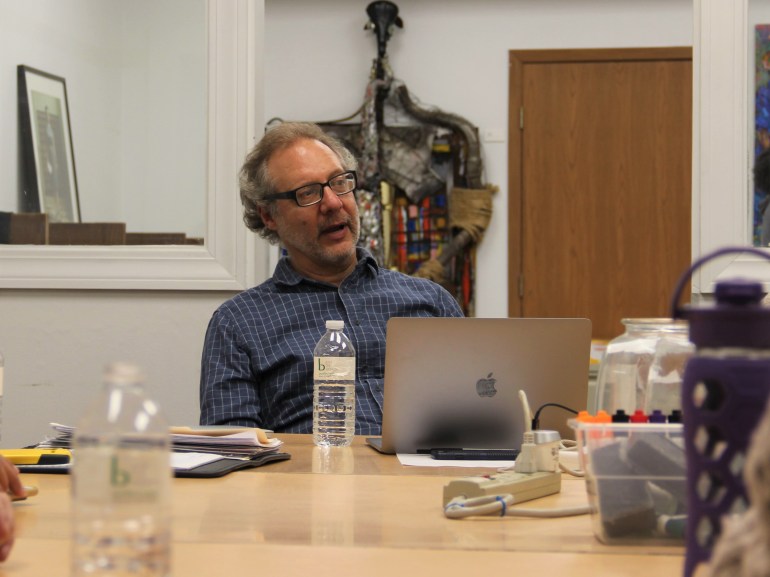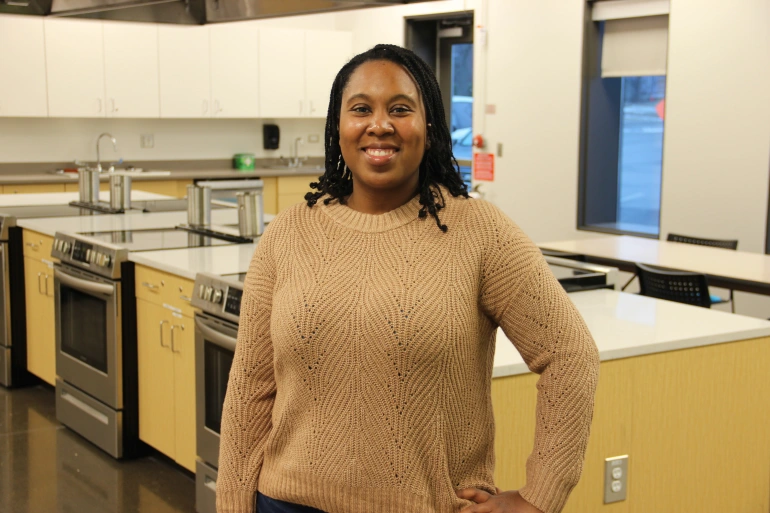Huge federal cash infusions are set to transform communities across the United States, like Dayton, Ohio.
By Stephen Starr
Dayton, Ohio, the United States – For much of the 20th century, Dayton, Ohio was a trailblazing industrial and innovation powerhouse, home to the Wright brothers, LexisNexis and a host of auto plants.
Since then, it has suffered the same fate that’s stricken many industrial US cities: the loss of thousands of manufacturing jobs and the gutting of whole communities. In Dayton’s case, that experience was bookended by the closing of a General Motors plant in 2008 with the loss of 2,400 jobs.
With a metro population of about 800,000 people, Dayton today is a city in flux. As with many Midwestern communities, gun violence, the fallout of the opioid crisis and segregation are found side by side with new breweries, a burgeoning arts scene and popular outdoor trails.
Now, thanks to the American Rescue Plan Act (ARPA), the $1.9-trillion pandemic stimulus package championed by US President Joe Biden that was signed into law last March, Dayton and hundreds of struggling communities like it across the US are counting on $350bn earmarked for state and local governments they hope will improve their residents’ everyday lives.
The City of Dayton is set to receive $138m of those funds. And the much-needed cash infusions don’t stop there. The Infrastructure Investment and Jobs Act signed into law in November will see $1.2 trillion spent nationally on roads, bridges and other infrastructure needs. Tens of billions of that have been earmarked for Ohio.
All of this begs the question: Where should the money be spent?
What the people think
For community leader Cherrelle Gardner – who helps run the business incubator Co-op Dayton and a makerspace in West Dayton, a poor, predominantly African-American district – the priority should be on human infrastructure, such as child and elder care, as well as reducing urban blight. She believes, however, that tackling one issue in isolation won’t solve the area’s problems.
There’s this intertwined issue between food, jobs and housing.
BY CHERRELLE GARDNER, CO-OP DAYTON
“There’s this intertwined issue between food, jobs and housing – the reason people can’t afford homes is because we don’t have jobs that pay for those homes and for food,” she told Al Jazeera. “In these neighbourhoods you’ll find almost exclusively these low-wage jobs.”
The city of Dayton says it plans to spend the $138m ARPA funding on demolishing more than 1,000 vacant homes, shoring up its own income-tax revenue lost during the coronavirus pandemic, developing park space and supporting other community projects.
Analysts say that while communities throughout the country are set to benefit from the cash infusions, those struggling with depressed economies stand to gain in particular.
“The key point here is that industrial cities have often been in a degree of recession for years, going back long before the pandemic,” said Mark Muro, a senior fellow at the Brookings Institution. “Some of these cities have seen a steady winnowing of population, enterprises and tax revenues for decades.”
That shrinking, Muro believes, has steadily narrowed their “fiscal space” — the ability to undertake projects comfortably. “So, the cash infusions of the Rescue Plan are especially welcome to such areas,” he told Al Jazeera.
Dayton is deeply divided along racial lines. It ranked as the nation’s 15th most segregated city on a 2017 list compiled by news outlet 24/7 Wall St, based on data from the US Census Bureau.
That gulf is also evident in income inequality. White, non-Latino residents in the Dayton metro area have an annual median household income of $71,664 compared to $43,862 for African-American residents, according to the Census Bureau.
“The problem here is that if you can afford a home and good quality food, then you leave the [West Dayton] community for communities where you have easy access to homes and food,” said Gardner, “so the tax base is constantly down.”
Using the money to bridge the poverty gap is a common thread. “To me, the investment really needs to be in the neighbourhoods, almost exclusively in the low-status neighbourhoods that have real issues with abandoned properties,” said Peter Benkendorf, who runs the Dayton Collaboratory, a civic innovation lab. “There’s a lack of viable structures for small businesses that serve the immediate needs of their residents.”

A tornado outbreak that struck the region in May 2019 damaged or destroyed more than 2,200 homes and buildings, many in West Dayton. The next year, the pandemic hit new and small businesses – especially minority-owned clothing stores and breweries – hard. Locals say the demand for financial support is acute: When city authorities opened part of the ARPA funding to the public last year, local organisations sought more than double the total available funds.
“Is this money going to have an impact? The cynical side of me says no,” Benkendorf told Al Jazeera. “We need systemic change and I’m not sure any of the investments being made are going to lead to any kind of systemic change. [But it’s] better to have $138m than not, of course.”
Failure to pass the ambitious Build Back Better Act, mired for months in political wrangling in Washington, DC, could have huge consequences for communities around the country in the long term, at a time when 10 million children are at risk of falling back into poverty after the advanced monthly child tax credit programme expired at the end of December.
But some critics argue that more spending would further fuel inflation – which disproportionately harms low-income households because it consumes a larger share of their financial resources. Senator Joe Manchin, the West Virginia Democrat who has been blamed for blocking the act, has suggested that “inflation could really harm a lot of Americans, especially those who are most needy”.
One report suggests that families in Ohio could gain up to $14,000 in additional support and benefits should the Build Back Better initiative pass into law.
Reviving downtown to strengthen community
Dayton native Jennifer Sydor moved to New York City in 2002 and until recently lived there, working at Rutgers University and dancing for the Metropolitan Opera. But when the pandemic hit New York in March 2020, she and her family decided to leave their one-bedroom Brooklyn flat behind and shelter in place with Sydor’s mother in Dayton. Six months later the family moved back permanently to Ohio.

“[There’s] the low cost of living, there’s so much access to nature and there are bigger cities [close by],” she told Al Jazeera. Her three-year-old son now has his own bedroom. “We have an office for Dan [her husband]. We have a basement. It’s been really, really wonderful for our family.” Sydor says she has also been pleasantly surprised by the city’s “rich dance community”.
But there are still problems that plague the area, she said, like segregation. Sydor believes encouraging more people to come downtown would help push the needle on solving that pernicious problem.
Efforts are under way to do just that. Around $90m has been spent redeveloping a section of an iconic, century-old group of buildings known as the Arcade that opened last year after laying empty for 30 years. The number of housing units has increased by 77 percent over the past decade.
People still need things to do downtown, said Sydor, and spending ARPA funds on arts programmes is one way to help promote that.
“There are free concerts [in summer], which are fantastic,” she said. “[But] we need more events, more free events … more people on the streets.”
SOURCE: AL JAZEERA


